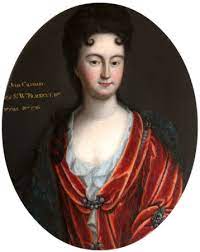The Blackett ancestral home of Esholt Hall stands today close to the village of Esholt near Bradford, in the County of West Yorkshire.

The village is understood to date to at least the 12th Century, has its own old hall and is famed as part of the original “Beckindale” film location (from 1976-1996) for the British TV soap series “Emmerdale”. Esholt Hall also featured in the television adaptation of Dame Catherine Cookson’s novel, “The Moth.” The area is believed to have been named after the nature in the area, Esche or Ash and Holt or Wood (i.e. Ashwood). Built by Sir Walter Calverley in 1706, Esholt Hall is a Queen Anne style mansion house with terrace, conservatory and grounds. The property is constructed on the site of a Cistercian nunnery dedicated to St. Mary and St. Leonard where eleven nuns resided there until the dissolution in 1540. Preserved cellars below the current building are believed to be those of the nunnery.



Sir Walter was married to Julia Blackett of Newcastle, daughter of Sir William Blackett, and a great great granddaughter of Edward Blackett of Bumley Row, Hamsterley. He was also the great grandson of Walter Calverley of Calverley Hall, near Leeds, who is notorious for murdering two of his young sons and attempting the same on his wife there in 1605 and whose sister-in-law, Elizabeth, was the daughter of Ambrose Rookwood, gunpowder plotter. Esholt Hall passed to his son, another Walter Calverley, when Sir Walter died in 1749. This Sir Walter had earlier married Elizabeth Orde in August 1729, the illegitimate daughter of his uncle, Sir William Blackett of Newcastle, and, as a condition of inheritance, changed his name to Sir Walter Calverley Blackett in order to inherit the Blackett of Newcastle estates. He remains a prominent figure in the history of another Blackett ancestral home, Wallington Hall, Cambo in Northumberland.

Sir Walter Calverley Blackett sold Esholt shortly after inheriting it and the building has subsequently been owned by the Stansfield family, by Bradford Corporation, and is currently owned by Yorkshire Water who use it as a conference and training facility. The latter have acknowledged its history by naming a suite in the building after the Blackett family. Sir Walter Calverley Blackett died in 1777 and is buried in the Calverley family vault in St Wilfrid’s Church at Calverley village, Leeds, close to the old hall of his murderous ancestor, and to Blackett Street1, named after the area’s connection to the Blacketts.


According to church records, his ancestor, Walter Calverley, was buried at St. Mary’s, Castlegate, York, following his execution in August 1605, but legends abound as to where his body now rests. Tales of weighted coffins buried in various locations, (a strategy aimed at putting the mob off attempting to disinter his remains and place them in a gibbet), have perpetuated down the centuries, with stories of clandestine night time movements of his body.
Although he is today entombed in St.Wilfrid’s, Sir Walter Calverley Blackett may have contributed to later versions of these stories. Whilst his death on 14 February 1777 occurred in London, where he was buried at Kensington, his body was to be moved some 18 months later, along with that of his daughter Elizabeth on 29 July 1778 to be reinterred at Calverley on 15 August 1778, reportedly “at midnight by the light of flaming torches”.
The portraits were photographed with permission from Yorkshire Water.
1 Blackett Street was formerly known as Calverley’s Back Lane. In 1756 Sir Walter paid for a workhouse to be erected there.
